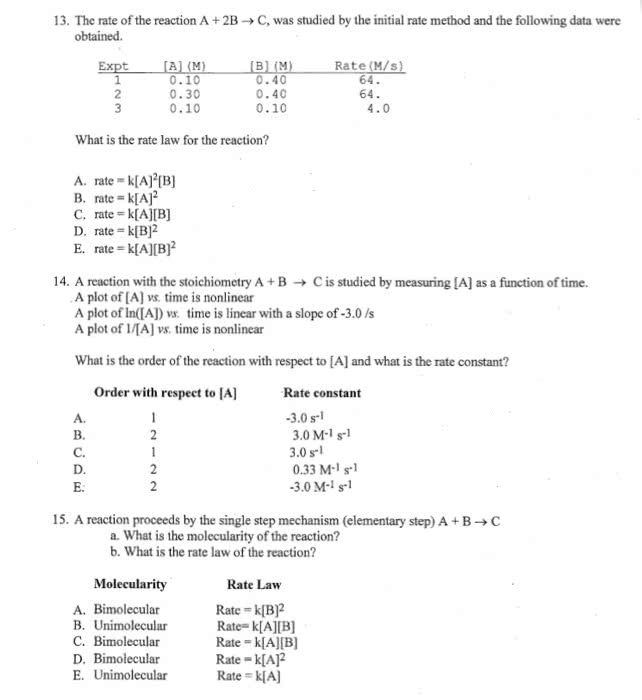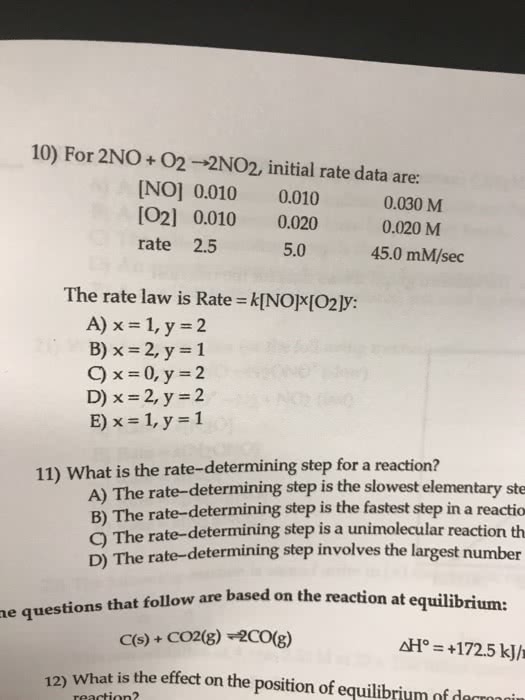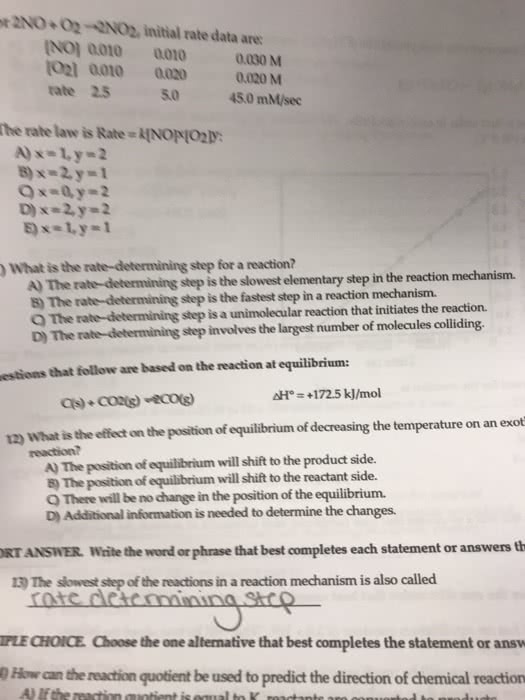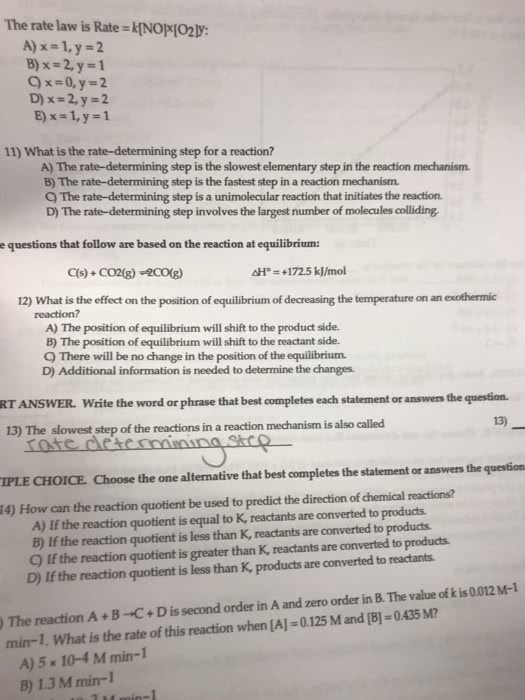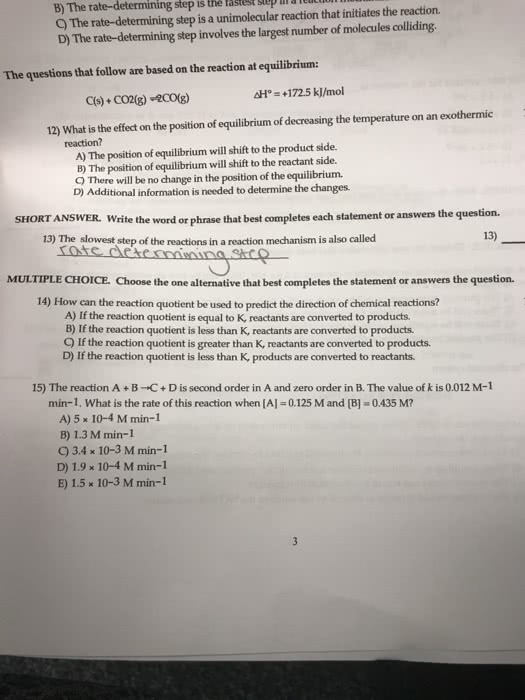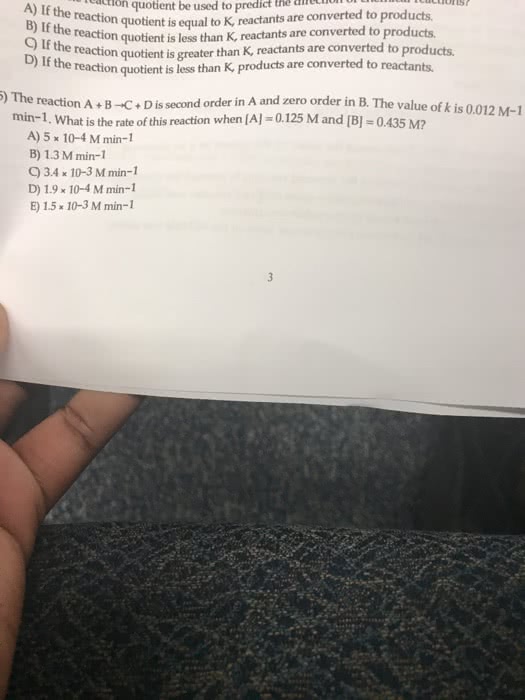CHEM 112 Lecture Notes - Lecture 5: Rate Equation, Reaction Rate Constant
Document Summary
A products (e. g. o3 o2 + o) The relationship between the rate of a unimolecular reaction and the concentration of a is directly proportional by a factor of k (the rate constant) The rate law for a unimolecular reaction is k[a]x where x is always equal to 1; measured in m/s. A+b products (no + o3 no2 + o2) The rate of product formation depends on the frequency of molecular collisions, which depends on the concentrations of a and b. Rate law for bimolecular elementary reactions: k[a]x[b]y; x = y = 1; overall order = 2; measured in m/s. Keep in mind this is only for elementary reactions k"s units are m-1s-1 (1/ms) A+b+c products: rate: k[a]x[b]y[c]z; x = y = z = 1; overall order = 3. Again only for elementary reactions k"s units are m-2s-1 (1/m2s) A+2b or 2a+b products: rate: k[a]x[b]2 or k[a]2[b]y.



